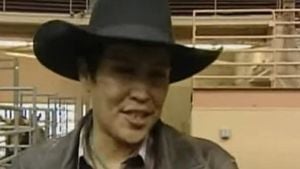Max Verstappen's future in Formula 1 continues to dominate headlines as the sport navigates a period of significant change and speculation. The four-time World Champion, who remains under contract with Red Bull Racing until the end of 2028, is at the center of a complex web of negotiations, rumors, and strategic moves involving some of the sport's biggest names and teams.
Recently, Aston Martin has emerged as a hopeful suitor for Verstappen's signature, keeping fingers crossed that his ongoing talks with Mercedes do not materialize into a deal. Despite their ambitions, Verstappen has reportedly ruled out a move to Aston Martin for the 2026 season, focusing instead on discussions with Mercedes team principal Toto Wolff. This stance makes sense given Aston Martin's current status; they sit eighth in the Constructors' Championship, tied on points with Racing Bulls, and are still in the process of proving their competitiveness at the highest level.
Lawrence Stroll, Aston Martin's billionaire owner, has invested nearly £800 million into transforming the team into a world championship contender. His recruitment drive has been impressive, most notably securing former Red Bull designer Adrian Newey to spearhead their 2026 project. Additionally, Aston Martin will benefit from an exclusive engine partnership with Honda, the very manufacturer behind all of Verstappen’s title-winning cars. However, the Dutchman’s cautious approach reflects the inherent risk of joining a team that has yet to demonstrate consistent front-running performance.
Verstappen's current contract with Red Bull includes an exit clause, widely believed to hinge on his standing in the top three of the drivers' championship, either permanently or at a specific point during the season. At present, Verstappen holds an 18-point lead over George Russell, who sits fourth, keeping that clause potentially active. Should the clause not be triggered, any team wishing to acquire Verstappen would face a daunting buyout fee in addition to his hefty £59 million annual salary. German journalist Michael Schmidt has highlighted the impracticality of such a move, stating, "If the exit clause doesn’t allow him to get out, then he will stay there. The exit fee, together with the salary that Verstappen has to be paid, is so high that we hear no team will pay that, not even Mercedes." Previously, estimates have suggested this exit fee could reach nine figures, underscoring the financial hurdles involved.
The recent dismissal of Christian Horner as Red Bull Racing’s CEO and team principal has only intensified speculation around Verstappen’s future. Horner, who had led the team since 2005 and was instrumental in the successes of both Sebastian Vettel and Verstappen, was removed following discussions among major shareholders Chalerm Yoovidhya and Mark Mateschitz, alongside sports chief Oliver Mintzlaff. The decision, which came as a surprise to many given Horner’s contract running until 2030, has sparked widespread reactions across social media platforms, with fans debating whether his departure is linked to Verstappen’s potential move to Mercedes or an attempt to prevent it.
Verstappen’s dominance on track further complicates Red Bull’s position. Since the British Grand Prix in July 2024, Verstappen has scored an astonishing 347 points, accounting for 88 percent of Red Bull’s championship points over the last year and an even more staggering 96 percent in 2025 alone. This level of contribution highlights just how pivotal he is to Red Bull's success, especially as the team currently languishes fourth in the Constructors' Championship. The prospect of losing Verstappen presents a significant risk, one that team principal Helmut Marko and the remaining leadership are undoubtedly preparing for.
Red Bull’s famed driver development program has historically been a conveyor belt of talent, producing world champions like Verstappen and Sebastian Vettel, alongside race winners such as Daniel Ricciardo, Pierre Gasly, and Alex Albon. The question now is whether the program can deliver the next Verstappen or if the team will look externally to fill the void.
Among the potential candidates to replace Verstappen, George Russell stands out as a leading option. The British driver is a proven race winner and is out of contract at the end of 2025. While Mercedes is expected to retain him, if Verstappen departs, Russell could be available for Red Bull, at least in the short term. However, if he does not join Red Bull, it’s likely he will secure a seat elsewhere in the 2026 grid, making him a fleeting option.
Within Red Bull’s own ranks, French driver Isack Hadjar is next in line. After a rocky start to his F1 career in Australia, Hadjar has shown impressive progress, particularly in his battles with teammate Liam Lawson. Hadjar’s trajectory suggests he could be ready to step up to the senior team when the time comes, although the timing of such a promotion remains uncertain.
Liam Lawson himself has experienced a mixed season. Initially promoted to the senior Red Bull team for the 2024 season, Lawson struggled to adapt and was subsequently moved back to Racing Bulls. Since then, he has regained form, notably achieving a career-best sixth-place finish at the Austrian Grand Prix. Lawson’s talent remains evident, and with more experience, he could be a valuable asset for Red Bull in the future.
Adding to the young talent pool is 17-year-old Arvid Lindblad, who recently received an FIA Super Licence dispensation, making him eligible to compete in Formula 1. Lindblad is viewed as a rising star within the Red Bull system, and the team’s pursuit of his Super Licence indicates strong confidence in his potential. Whether he can ascend quickly enough to fill Verstappen’s shoes remains to be seen, but his inclusion in the driver pipeline is a promising sign.
Meanwhile, rumors linking Verstappen’s exit clause to Red Bull’s position in the Constructors' Championship, currently fourth due to teammate Yuki Tsunoda’s struggles, have been dismissed by sources familiar with the situation as “nonsense.” This clarification removes some uncertainty around the contractual triggers that might facilitate Verstappen’s departure.
As the 2025 season unfolds, the stakes continue to rise. Aston Martin’s gamble on a future challenge with Newey and Honda’s exclusive power unit, Mercedes’ strategic positioning, and Red Bull’s internal reshuffling all paint a picture of a sport on the brink of a major shift. Verstappen’s decision, whether to stay or move on, will undoubtedly shape the trajectory of Formula 1 for years to come.
For now, the action remains ongoing, with no definitive outcome on Verstappen’s future. Fans and insiders alike watch eagerly as the negotiations and developments unfold, knowing that the next move could redefine the championship landscape.




